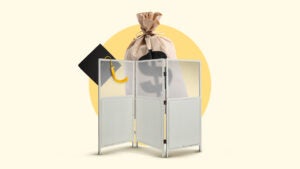Personal loan interest rates in 2025 | Facts and statistics

Personal loan debt in the U.S. reached $245 billion in the fourth quarter of 2023, and the number of consumers with personal loans reached a record high. With the Federal Reserve’s rising inflation and rate hikes, interest rates for lending products have increased.
While most personal loans are fixed-rate loans, meaning that the interest rate does not change over the life of the loan, borrowers with variable-rate personal loans are directly impacted by the Federal Reserve’s rate hikes. In addition, Federal rate hikes and inflation do impact interest rates for new fixed-rate personal loan borrowers, although indirectly.
As economic conditions worsen and more Americans take on personal loan debt, it is important for consumers to understand how inflation and Federal rate hikes affect their loans. Before taking out a personal loan, calculate how much you will be paying in interest to avoid deferring on a loan or taking on unnecessary debt.
Personal loan and interest rate statistics
- The average personal loan interest rate is 12.37%.
- The average personal loan debt per borrower in the U.S. is $10,749.
- Boomers have the highest overall personal loan balance of all generations with an average of $20,370.
- Inflation is currently sitting at 2.5% month over month.
- The Federal Reserve decreased its interest rate for the first time in four years at its September meeting and cut it again in November.
- The current federal funds target rate is 4.75% to 5%.
- Due to the existing macroeconomic conditions, borrowers looking for new loans in 2024 will feel the sting in their pockets as interest rates continue to rise.
Impact of the Fed rate hike on personal loans
Interest rates are the amount of interest due per period on a loan. They are typically expressed as an annual percentage of the loan amount due.
Interest rates change based on the market demand for credit—the more demand there is for credit products, the higher interest rates are likely to be. If demand for credit products goes down, interest rates will also go down. Decisions from the Federal Reserve also influence interest rates for most credit products. When the federal rate goes up, interest rates tend to rise for most loan products.
Interest rates impact more than the credit and lending sphere: they affect stocks, bonds, consumer and business spending and inflation. As interest rates continue to rise for most credit products, Americans are feeling the weight of those extra costs.
Interest rates by year
The start of the pandemic saw a severe drop in average interest rates, but those rates have rebounded and grown since.
Average personal loan interest rates in the U.S. by state
When it comes to a state-by-state look at personal loan interest rates, there is an almost 4 percent difference between Rhode Island, which has the highest rate, and Florida, which has the lowest.
How does age impact credit scores?
Since borrowers with good to excellent credit are more likely to qualify for the best rates, it makes sense that the Baby Boomer generation tends to take out more loans than other generations. Boomers have the highest overall personal loan balance of all generations, with an average balance of $20,370.
| Age/Generation | Average credit score |
|---|---|
| Gen Z | 674 |
| Millennials | 680 |
| Gen X | 699 |
| Boomers | 736 |
How does lender type impact interest rates?
The interest rate you qualify for depends on your credit score and financial background, but it also depends on the type of lender you choose.
Banks tend to have the highest interest rates and strictest eligibility requirements because these institutions are so highly regulated. Credit unions typically have slightly lower rates since they require membership to apply for loan products. However, online lenders typically have the lowest rates of all, as well as the most lenient eligibility requirements.
How does race impact interest rates?
Social bias and racism also play a role in who gets what rates. Research suggests that high-income Black homeowners receive higher mortgage interest rates than low-income White homeowners.
Evidence suggests that Black and Hispanic consumers are more likely to be victims of predatory payday lenders. These disparities are likely due to systemic racism in lending and differing socioeconomic circumstances perpetuated by systemic racism.
Variable vs. fixed rate loans
Consumers can find and apply for both fixed-rate and variable-rate personal loans. However, fixed-rate personal loans are far more common.
Fixed-rate personal loans have the same interest rate over the life of the loan, meaning that you do not have to worry about your rate going up once you are locked into the loan. Variable-rate personal loans have rates that can go up and down depending on market conditions, meaning that the recent federal rate hikes directly impact the interest rates on these loans.
Fixed-rate personal loans are generally preferred because they are more predictable. While new fixed-rate loan borrowers are likely to see higher interest rates than past borrowers, there is no risk of that rate increasing once you’re locked in, making fixed-rate loans a much safer option.
Borrowers with a variable-rate loan are likely to see higher monthly payments due to rising interest rates. For borrowers on a tight budget, rising rates could mean the difference between paying off the loan and going into delinquency.
Tips for people with variable-rate loans
If you got a variable-rate personal loan when interest rates were low and you’re worried about rising costs, there are some things you can do to avoid paying a fortune in interest.
- Pay off your variable rate loan as soon as possible. If you can afford to pay off your loan early, it may be a good idea. Rates are likely to rise before they ease, so paying off your loan before you accrue more interest could help you save money in the long run.
- Try getting the remainder of the loan switched to a fixed-interest rate loan. Refinancing your variable-rate loan with a fixed-rate loan will allow you to finish your payments at a steady interest rate. If you choose to refinance, make sure you find a loan with a lower interest rate than your current loan.
- Work on your credit score. While market conditions have a huge impact on variable-rate loans, your interest rate is also determined by your credit score. If you can take steps to improve your credit score, you may be able to get a lower interest rate on your loan.
- Work on your budget. If rising loan costs strain your finances, it could be worth restructuring your budget and seeing where you could spend more efficiently. Talking to a financial advisor to get advice on how to allocate funds could also help ease the stress of rising costs.
- Try negotiating with your lender. There is also the possibility of negotiating a lower interest rate with your lender. It is worth speaking with your lender to see if you can come up with a solution together.
The bottom line
While rising interest rates certainly cause consumer anxiety, America’s current inflation problem is the top priority. Americans are struggling to cover basic necessities and housing, and the Federal Reserve is raising rates to ease that financial burden.
While inflation is likely to worsen before it improves, there have been signs that raising interest rates is beginning to improve housing and gas prices. For consumers struggling with variable-rate credit products, transferring that debt to a fixed-rate credit product like a debt consolidation loan could ease that financial strain.
There is no denying that rising interest rates and inflation are both causing financial hardship for consumers, but there are things that individuals can do to stay afloat. If you are having trouble managing your finances during the current uncertainty, look into preparing your finances for a recession.
You may also like

Delayed financing: What it is and how it works

What is a private student loan?

How changes in interest rate affect debt

When will personal loan interest rates start dropping?


